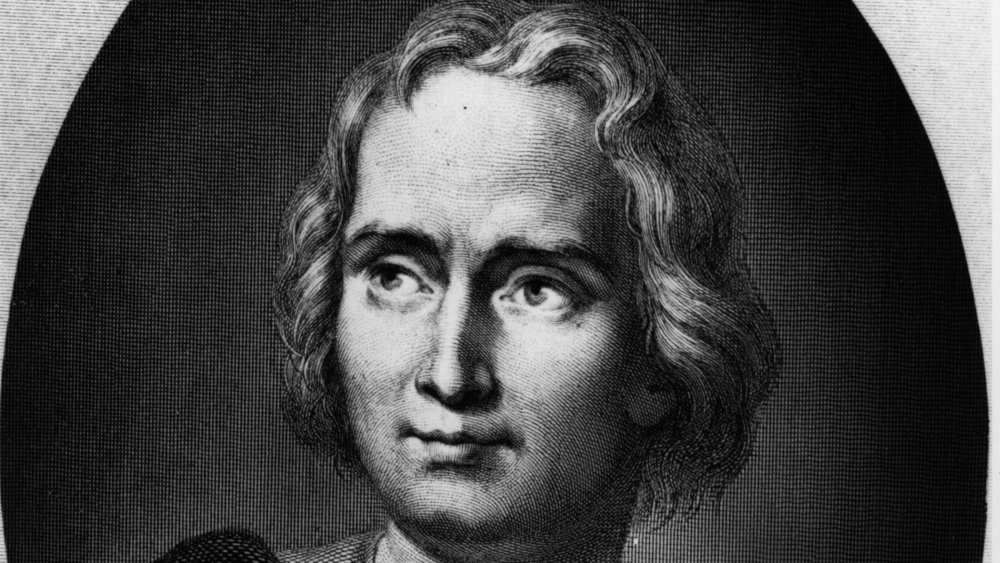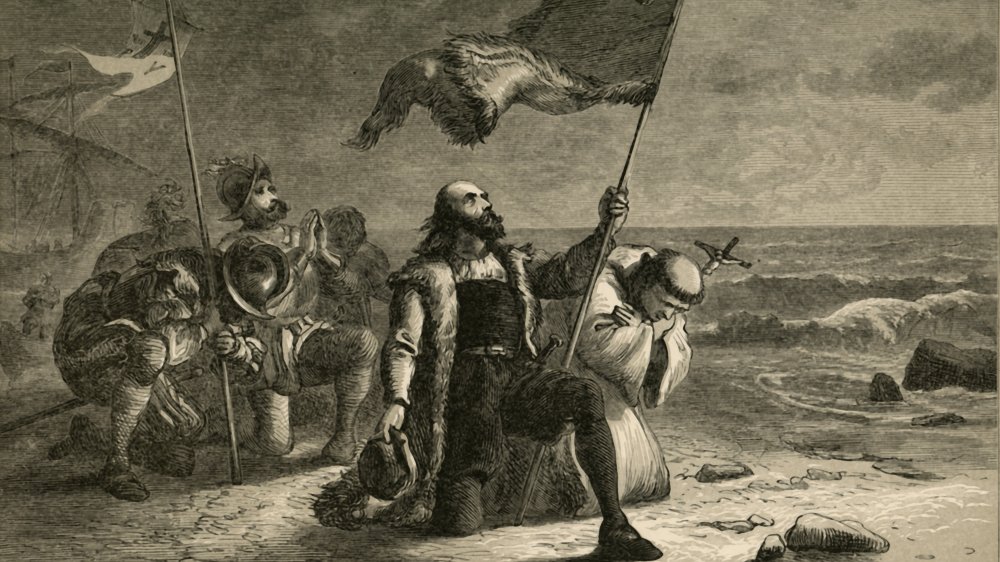The Reason Christopher Columbus Didn't Actually Discover America
"In 1492/Columbus sailed the ocean blue" is in fact true, but many other historical "facts" we've been taught about Italian explorer Christopher Columbus are completely false. According to the classic social studies lesson, Columbus accidentally "discovered" what was to become the United States of America while leading a Spanish expedition that consisted of three ships, the Nina, the Pinta, and the Santa Maria. He was looking for a new route to the West Indies, all the while trying to prove wrong the then-accepted wisdom that the world was a flat surface, as opposed to a globe. According to the Washington Post, most of this lesson has since been debunked.
Theories that the Earth is round existed as early as the sixth century BCE, and by the time Columbus was around, educated people knew that the Earth wasn't flat and that ships wouldn't sail off the edge into space. One book, The Sphere, written sometime in the early 1200s, "was required reading in European universities in the 1300s and beyond." Columbus may have been unsure of the size of the ocean he was crossing in search of a new trade route, but he was well aware that the Earth was round, as Biography tells us. Secondly, Columbus' ships were not really named the Nina, the Pinta, or the Santa Maria.
Columbus never entered what would be the continental U.S.
According to History, The Santa Maria was also known as La Gallega, while the Nina was a nickname for the ship the Santa Clara and the Pinta was probably another nickname for a boat whose real name is lost to time.
Finally, not only did Columbus not discover America — there were already Native Americans who had been living there for thousands of years — he literally never set foot on what became the continental United States. He took four trips, beginning with the famous one in 1492, and within the course of them landed on various islands that are now known as the Bahamas, as well as what is now called the island of Hispanola, within the Greater Antilles, and Puerto Rico. He explored the coasts of Central and South America. As for his time on the Caribbean islands he "discovered," he was what the Washington Post termed a "a brutal viceroy and governor" who committed various atrocities against the islands' Native peoples, as well as Spanish colonists who had "discovered" the area before his arrival.
When the truth behind the legends comes to light, it's easy to see why several places have replaced the annual celebration of Columbus Day with Indigenous People's Day, first celebrated in Berkeley, California in 1992, per Dictionary.com. South Dakota was the first United States locale to rename Columbus Day, celebrating Native Americans' Day since 1990, reports KELO-TV.

